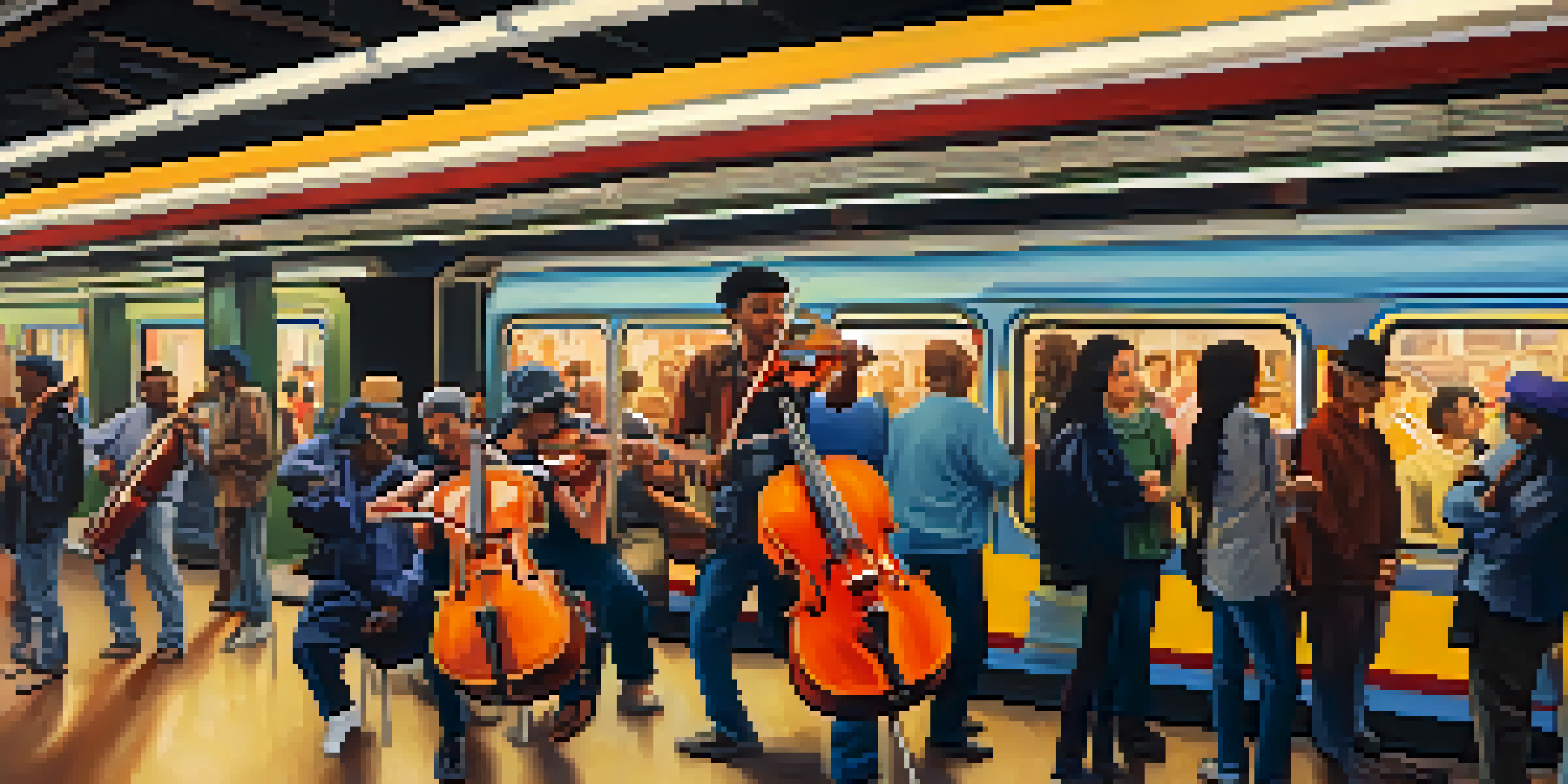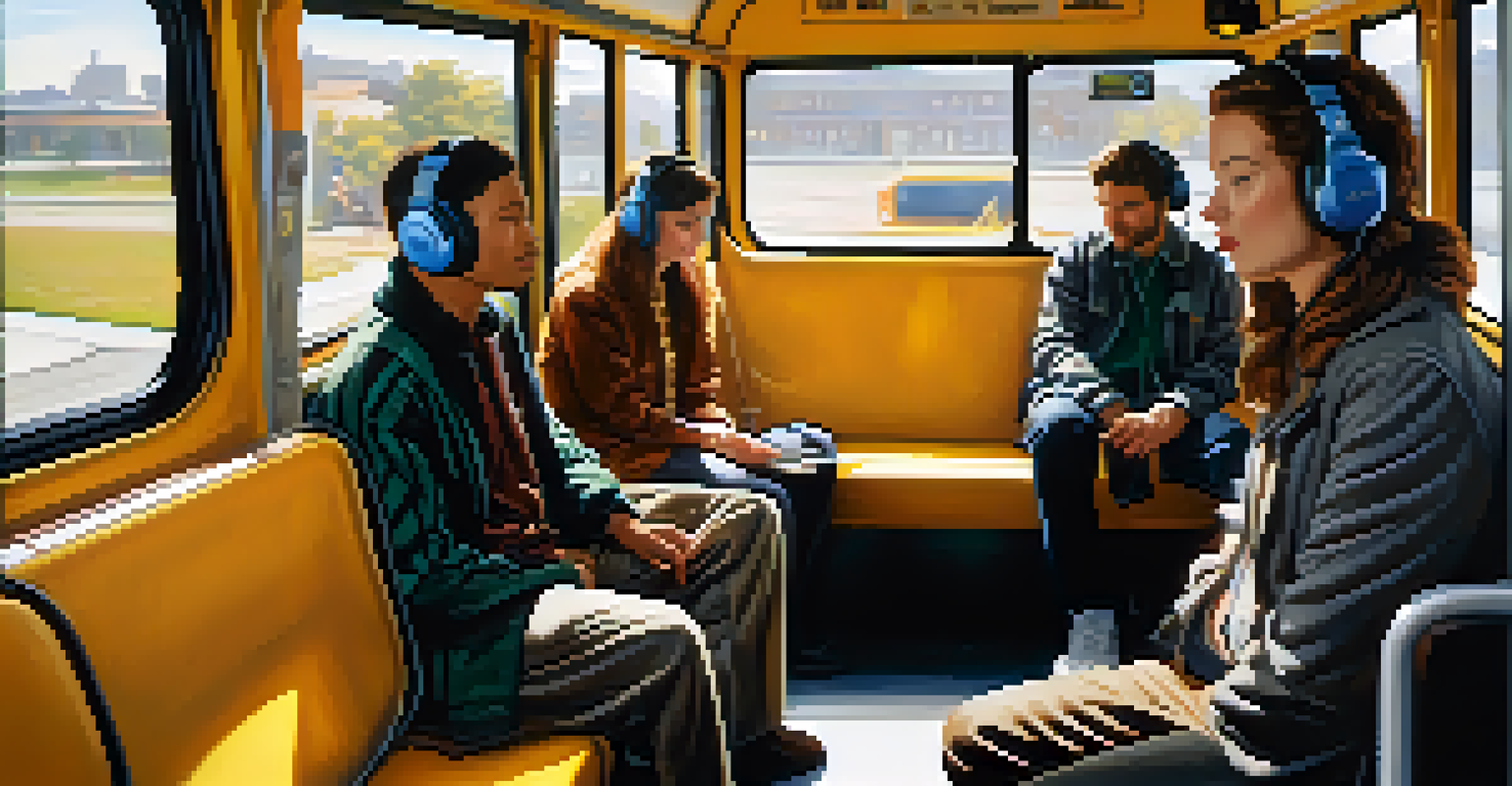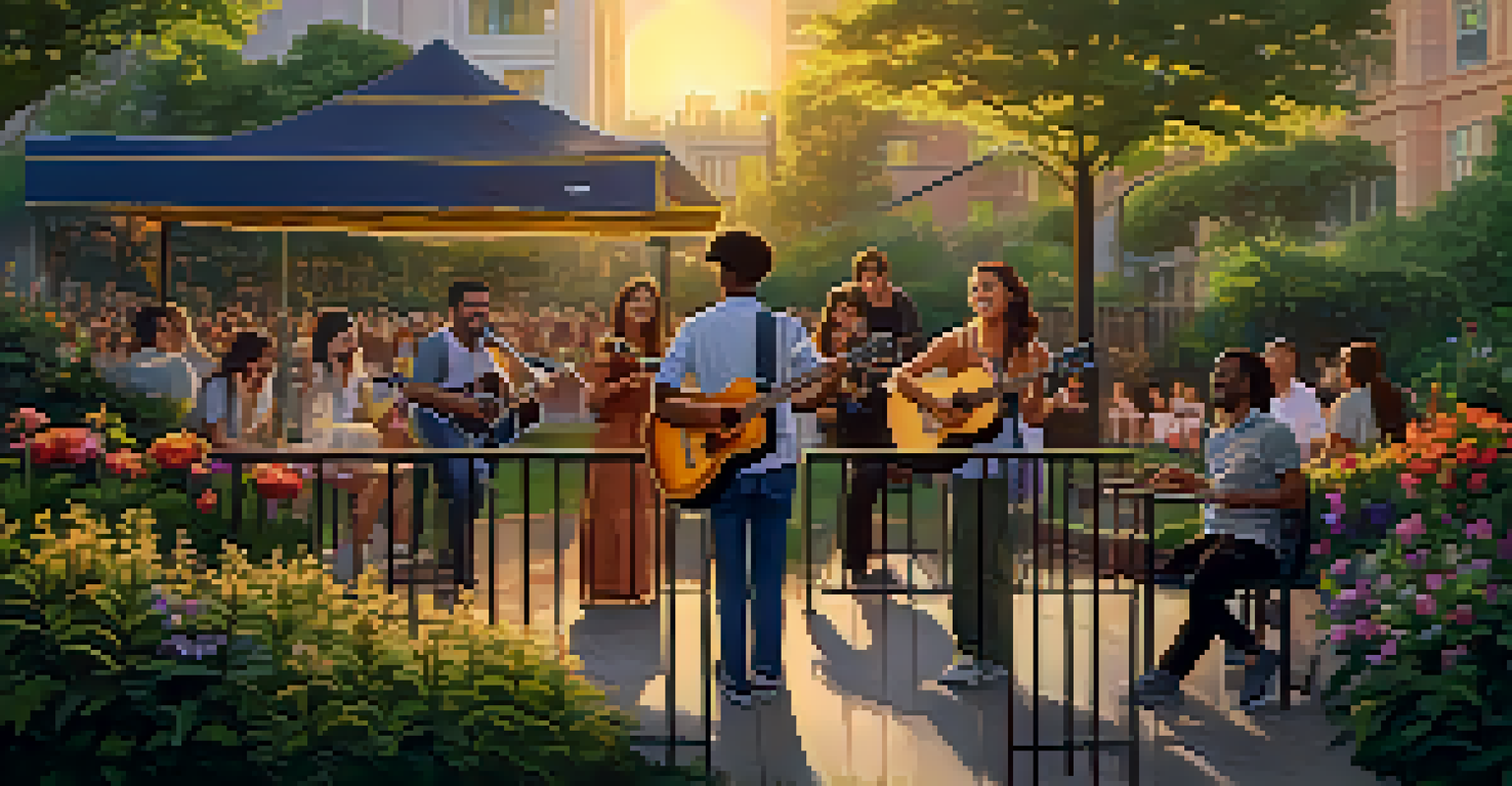Music and Public Transport: Enhancing Urban Mobility

The Role of Music in Enhancing Public Transport Experiences
Music has an incredible power to shape our experiences, particularly in public transport. When commuters step onto a bus or train, the right tunes can turn an ordinary journey into a joyful escape. From soothing melodies to upbeat rhythms, music can help ease the stress of daily commutes, making them more enjoyable.
Music can change the world because it can change people.
Imagine boarding a crowded subway, feeling the tension in the air. Now, picture your favorite song playing softly in the background. This simple addition can transform the atmosphere, helping people relax and even sparking social interactions among commuters. Music creates a shared experience that can foster a sense of community in transit spaces.
Beyond just enhancing mood, music can also influence behavior in public transport. Studies have shown that certain types of music can encourage people to move more quickly or be more patient while waiting. This can lead to smoother operations and a more efficient transit system overall.
Creating a Soundtrack for Urban Mobility
Cities around the world are beginning to understand the importance of a well-curated soundtrack for their public transport systems. By incorporating music into their environments, they can create a unique identity and enhance the overall experience for passengers. This can involve everything from live performances at stations to carefully selected playlists on trains.

A great example is the 'Music on the Metro' initiative in various cities, where local musicians perform in subway stations. This not only supports local artists but also brings vibrancy and life to the often monotonous commute. Commuters can enjoy spontaneous performances, making their travel more memorable.
Music Transforms Commute Experience
Incorporating music into public transport can enhance the commuter experience by reducing stress and fostering a sense of community.
Moreover, cities can use music strategically, such as playing calming sounds during rush hours to reduce stress. By tailoring the musical experience to different times of day, transit authorities can create a more pleasant environment that caters to the needs of their riders.
The Psychological Benefits of Music in Transit
Research shows that music can have profound psychological effects, particularly in stressful environments like public transport. Listening to music can help reduce anxiety and improve mood, making the daily commute feel less burdensome. This is especially important in urban areas where the hustle and bustle can be overwhelming.
Without music, life would be a mistake.
Commuters often face challenges such as delays or overcrowding, which can lead to frustration. However, the introduction of music can act as a buffer against these stressors. A familiar song can evoke positive memories and feelings, allowing individuals to escape their immediate surroundings and find comfort amidst chaos.
Additionally, music can serve as a form of escapism. When people listen to their favorite tracks, they momentarily transcend their environment, creating a personal space even in crowded public transport. This psychological break can enhance overall well-being, making the journey feel shorter and more enjoyable.
Music as a Tool for Cultural Expression in Transit
Public transport systems often reflect the culture and diversity of a city. Music is a powerful tool for cultural expression, and incorporating local sounds into transit environments can celebrate this diversity. By featuring various genres and artists, transit authorities can showcase the richness of the community they serve.
For instance, cities with significant cultural heritage can highlight traditional music from different backgrounds, allowing commuters to connect with their roots. This not only enriches the commuter experience but also fosters inclusivity and appreciation for diverse cultures.
Cultural Expression Through Sound
Public transport can celebrate the diversity of a city by featuring local music, which enriches the travel experience and promotes cultural appreciation.
Moreover, special events like music festivals or themed performances on public transport can further engage the community. These initiatives not only entertain but also promote local artists, creating a vibrant cultural scene that enhances urban mobility.
Safety and Security: The Role of Music in Public Transport
Safety is a key concern for commuters using public transport. Interestingly, music can play a role in enhancing feelings of security. When people hear familiar tunes, they may feel more at ease, reducing the sense of vulnerability that can accompany public transport.
Transit authorities can strategically use music in areas that may feel unsafe or isolated. By playing upbeat or lively music in waiting areas, they can deter anti-social behavior and create a more welcoming environment. This approach not only makes passengers feel safer but also encourages them to use the transport system more frequently.
Additionally, music can act as a signal for certain behaviors. For example, playing calming music at the end of the day can signal to commuters that it’s time to wind down, while more energetic tunes can inspire them to start their day with enthusiasm. In this way, music becomes an integral part of the safety and security framework in public transport.
Innovative Technology: The Future of Music in Transit
As technology continues to evolve, the integration of music into public transport is becoming more innovative. Smart systems can now curate playlists based on real-time data, adjusting the music according to the mood and density of commuters. This personalized approach can create a more tailored experience for passengers.
For instance, some transit systems are exploring the use of apps that allow riders to choose their music during their journey. Imagine being able to set your preferred genre before boarding a train, ensuring that your commute aligns with your mood. This kind of interactivity can enhance user engagement and satisfaction.
Economic Benefits of Transit Music
Investing in music for public transport can lead to increased ridership and tourism, benefiting both transit authorities and local artists.
Moreover, virtual reality and augmented reality experiences are on the horizon, allowing commuters to immerse themselves in musical environments during transit. This could revolutionize how we perceive our journeys, turning routine commutes into vibrant experiences filled with sound and creativity.
The Economic Impact of Music in Public Transport
Investing in music for public transport can also have significant economic benefits. Enhanced passenger experiences can lead to increased ridership, as people are more likely to choose public transport if they enjoy the journey. This can translate to higher revenue for transit authorities and local businesses.
Furthermore, local artists gain exposure and potential income through performances in transit spaces. This creates a symbiotic relationship between the music community and public transport systems, where both parties benefit from increased visibility and engagement.

Additionally, cities that prioritize music in their transport systems can attract tourism. Visitors often seek unique experiences, and a city known for its vibrant transit music scene can become a must-visit destination. This can boost the local economy and promote cultural tourism, positioning the city as a creative hub.